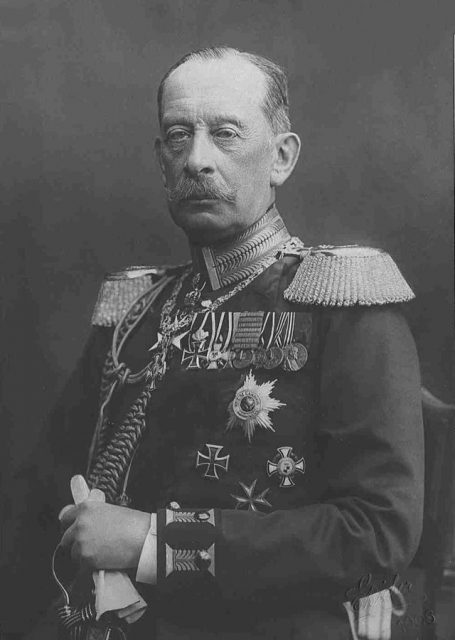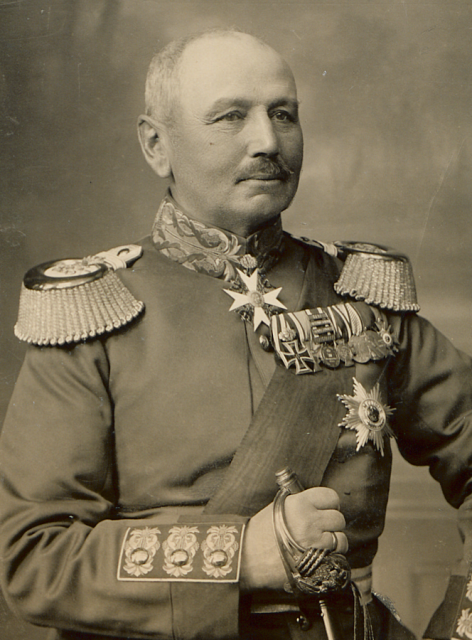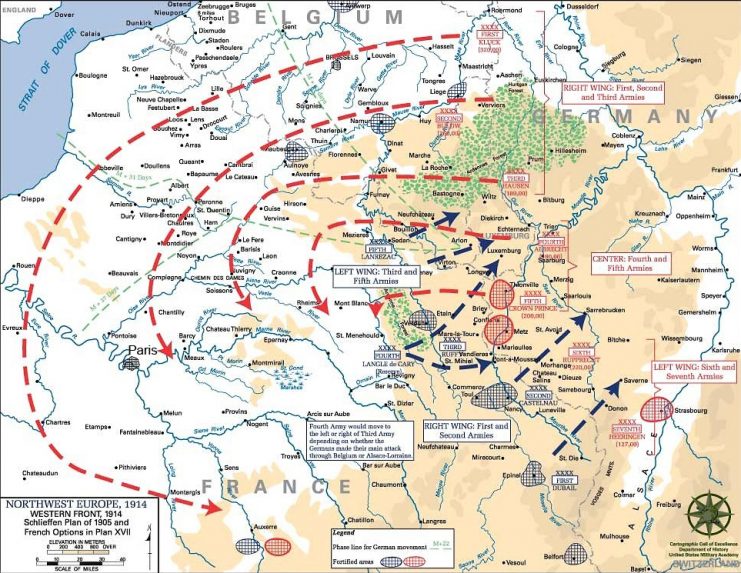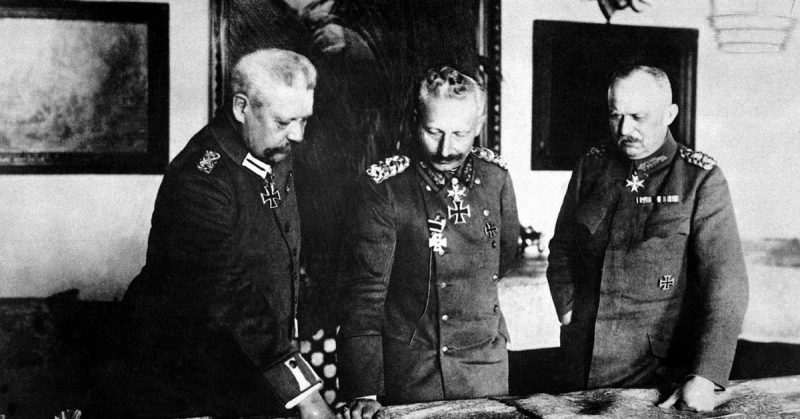Military plans are seldom famous in themselves. The battles are remembered but not the schemes that led to them. One notable exception is the Schlieffen Plan. It is famous not for its cunning and careful calculation, but for its failure.
A Plan to Avoid a Two-Fronted War
At the start of the 20th century, Germany had a strategy for fighting a war in Europe. It was called the Schlieffen Plan.
The strategy had originally been developed in the 1890s by Count Alfred von Schlieffen. After Schlieffen’s retirement as Chief of Staff in 1906, it was updated by his successor, Field Marshal Helmuth von Moltke. The Schlieffen plan was produced to get around the problem of international diplomacy. German politicians expected that, in the event of war, France and Russia would support each other against Germany. That would lead to a war on two fronts, dividing Germany’s military resources.
To avoid that situation, Schlieffen planned to attack France first, while Russia was still mobilizing. Through swift action, the Germans would outflank their enemies through the Low Countries, force France to surrender, and then turn to fight Russia.
Moltke watered down the plan. Since its inception, the Russians had improved militarily, and he did not want to have them invade Germany while he fought France. His adjustment left more German forces in the east.
He also decided to avoid invading the Netherlands, hoping to keep the British out of the war. It meant sending the entire flanking force through Belgium, a greater logistical challenge.

Early Successes
In 1914, the war began. Due to the Schlieffen Plan, a war against Russia in the east forced the Germans to immediately make war against France in the west.
Despite having fewer troops than in the original plan and less space through which to advance, the Germans at first seemed to be succeeding in their plan.
Belgium relied upon its concrete fortifications to hold up the Germans. They were to buy time for the Belgians, so they could receive support from the French and British, who despite Moltke’s hopes joined in the war. However, German and Austro-Hungarian superguns swiftly smashed the forts around Namur and Liège. The Belgians fell back to Antwerp, their last redoubt, leaving the Germans free to advance through the rest of the country.
German troops rushed through Belgium and Luxembourg into France. The French followed their own strategy, Plan XVII, with support from the British. In early August, the enemies clashed.
A series of battles followed. In the Battles of the Frontiers, the Germans send their opponents reeling again and again. They advanced a hundred miles in France. The Schlieffen Plan seemed to be working.
Slowing Down
The plan’s weaknesses were already beginning to show, although the German commanders chose not to see them. A 200-mile advance through Belgium and France, with fierce fighting along the way, had exhausted many German troops. The plan’s call for speed was all very well, but outside their own borders, the Germans could not rely on control of a railway system to advance their forces. They were slowing down.
There was another element entirely outside German control – their enemies. While the French, Belgians, and British were not doing well, they were not doing as badly as predicted in the original plan. Their weapons and strategies had moved on in 25 years, and they did not fall as easily as Schlieffen had anticipated. Every day they stalled the German advance was a day in which the Schlieffen plan fell behind.

Kluck’s Misjudgement
Then General Alexander von Kluck, commander of the German First Army, made a critical error.
Kluck’s army sat on the far right of the German invasion force. Its role was to advance deep into France and swing around Paris, surrounding the French capital and any forces based near it.
Fighting in late August caused General Karl von Bülow, commander of the Second Army, serious problems. He contacted Kluck and asked for help. Kluck agreed.
Without checking with his superiors, Kluck swung his forces southeast. They were marching east of Paris instead of going west and encircling the city. Kluck believed it was a safe move as he knew of no significant concentrations of enemy troops near Paris.
He was wrong. There were troops around Paris, and they were about to punish him for not sticking to the plan.
The Battle of the Marne
Marshal Joseph Joffre, the French Commander in Chief, had been assembling a new army near Paris. Seeing that Kluck had extended his forces and exposed his right flank, he saw a weakness to exploit.
On September 5, as the Germans continued their march south, Joffre struck.
Franco-British forces crashed into the side of Kluck’s army. Six days of battles followed, known collectively as the Battle of the Marne. Nearly two million soldiers fought.
There were heavy casualties on both sides. Around 25% of the men who fought at the Marne were killed or injured. While the Allies suffered as heavily as the Germans, they gained a strategic victory. Kluck and Bülow retreated in the face of the unexpected setback. The rest of the German forces had to fall back to keep in line with them.
Moltke ordered a German withdrawal toward the River Aisne. The retreat signaled the end of any hope of completing the Schlieffen Plan.
Moltke was replaced as German commander.

A Failure of Planning or a Failure of Execution?
It is easy to argue that the failure of the Schlieffen plan was a failure of execution. Kluck’s shift east had left the German flank exposed.
The plan, however, was flawed from the start. It relied on maintaining a near-impossible momentum. It took little account of Allied counter-moves. The boldness necessary for it to succeed had been watered down.
The Schlieffen plan could only have worked if events had gone perfectly. War never goes perfectly, and so the plan failed.
Source:
Ian Westwell (2008), World War I
